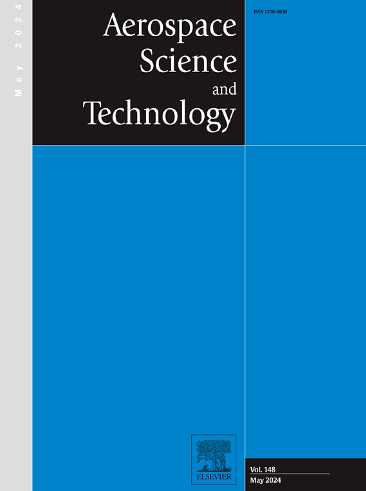Deep learning based flow field reconstruction study in the isolator of rocket based combined cycle engine
IF 5
1区 工程技术
Q1 ENGINEERING, AEROSPACE
引用次数: 0
Abstract
In a rocket based combined cycle engine, the incoming flow parameters change drastically during the wide range working process. Thus, the isolator is highly susceptible to overflow conditions resulting in engine performance degradation or even non-starting conditions. To broaden the stable working boundary, we design a deep learning-based flow field reconstruction method to obtain the flow field information within an isolator. The two-dimensional velocity field can be reconstructed rapidly by studying the one-dimensional wall pressure of the isolator. This method we proposed can realize the rapid sense of its own abnormal state, which provides the necessary conditions for timely engine regulation and the robustness improvement. To optimize the effectiveness of the method, we compare the reconstruction accuracy of the velocity field for four typical neural network models. The results show that the MPFC-CNN neural network has high reconstruction accuracy. In this way, the starting positions of the separation zone are accurately reconstructed, and the morphology of the center high-speed core flow shock train is obtained. It is indicated that the model can accurately identify the working state of the isolator, and provide accurate feedback for the efficient control of the engine. Therefore, this study has obviously high value in engineering application for the combustion stabilization and wide-range performance improvement of the combined cycle engine.
求助全文
约1分钟内获得全文
求助全文
来源期刊

Aerospace Science and Technology
工程技术-工程:宇航
CiteScore
10.30
自引率
28.60%
发文量
654
审稿时长
54 days
期刊介绍:
Aerospace Science and Technology publishes articles of outstanding scientific quality. Each article is reviewed by two referees. The journal welcomes papers from a wide range of countries. This journal publishes original papers, review articles and short communications related to all fields of aerospace research, fundamental and applied, potential applications of which are clearly related to:
• The design and the manufacture of aircraft, helicopters, missiles, launchers and satellites
• The control of their environment
• The study of various systems they are involved in, as supports or as targets.
Authors are invited to submit papers on new advances in the following topics to aerospace applications:
• Fluid dynamics
• Energetics and propulsion
• Materials and structures
• Flight mechanics
• Navigation, guidance and control
• Acoustics
• Optics
• Electromagnetism and radar
• Signal and image processing
• Information processing
• Data fusion
• Decision aid
• Human behaviour
• Robotics and intelligent systems
• Complex system engineering.
Etc.
 求助内容:
求助内容: 应助结果提醒方式:
应助结果提醒方式:


